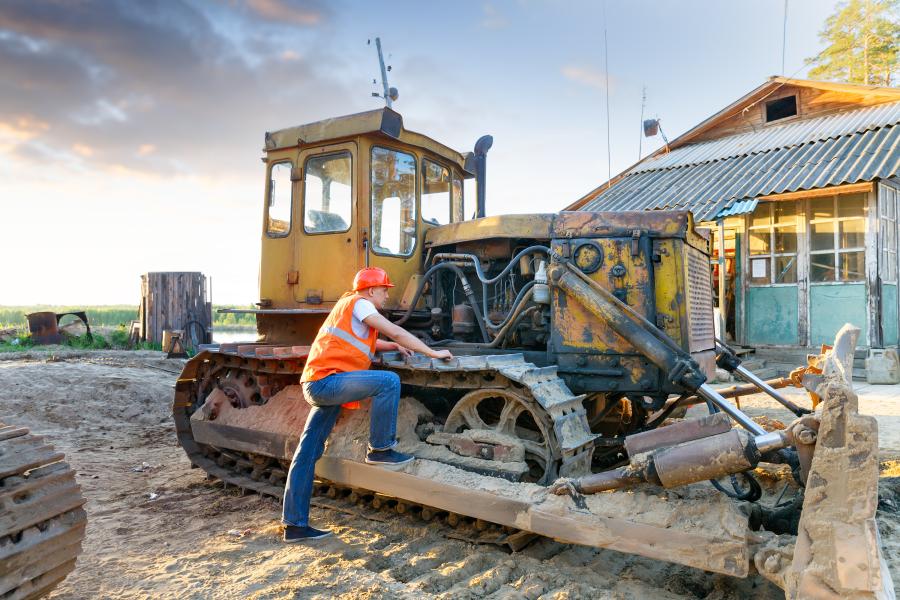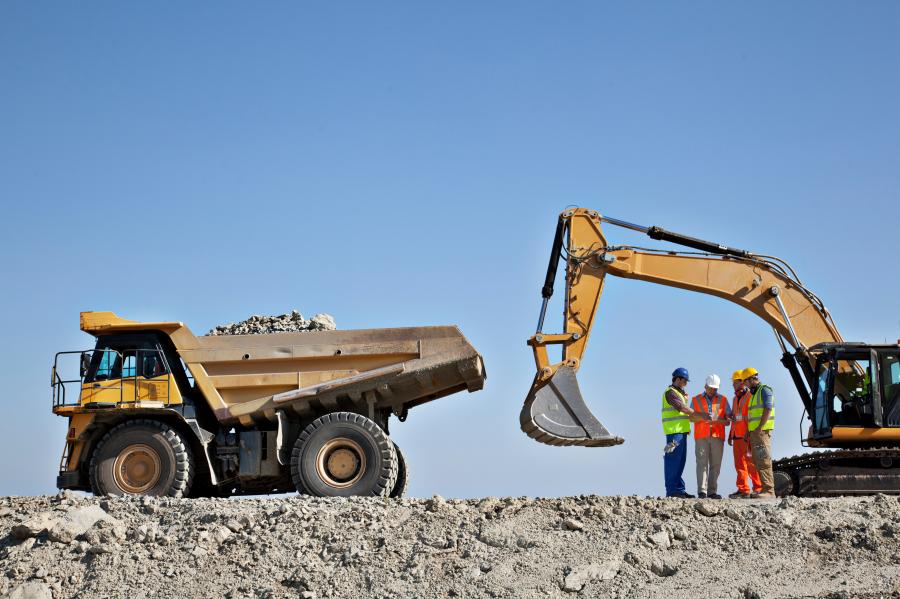Equipment manufacturers have made several recommendations to government policymakers regarding future emissions regulations, including to consider practicality versus investment.
Net-zero engine emissions is a construction industry goal, and everyone's got ideas on how to get there. Sectors of the industry are taking respective stands on federal emissions rulemaking. They are pushing for more of a voice in the rulemaking process while driving the fed to work harder at setting policy that both makes sense and benefits the environment.
The Association of Equipment Manufacturers (AEM) and its members "have aggressive goals to improve air quality and reduce the impact of climate change," said John Somers, association vice president of construction & utility.
Meanwhile, the diesel fuel sector wants to lead the charge toward an immediate impact in emissions reduction and is touting bio- and renewable fuels as a means of achieving just that.
The Environmental Protection Agency (EPA) recently adopted a comprehensive program to reduce emissions from nonroad diesel engines.
The agency is integrating engine and fuel controls to gain the greatest emission reductions.
"To meet these Tier IV emission standards, engine manufacturers will produce new engines with advanced emission control technologies," EPA said. "We have also adopted requirements for in-use diesel fuel to decrease sulfur levels by more than 99 percent."
The Fed's Expectations
The Clean Air Act (CAA) requires every U.S. engine and motor vehicle to meet a set of emission standards and conformity requirements.
"Anyone wishing to sell an engine or vehicle within the United States must demonstrate compliance," said the EPA.
That includes off-road equipment manufacturers, many whom are members of AEM.
Engine emissions regulations are among the most important and impactful requirements placed on off-road equipment, maintains the association. The rules affect engine performance, research and development, design, safety and cost.
"The most recent Tier IV update drove significant changes, including modernized electronic engines and aftertreatment for many power categories."
EPA intentionally set progressively more stringent emission standards for carbon monoxide, hydrocarbons, nitrogen oxides and particulate matter.
The agency said it realizes that to reduce mobile source pollution, not only for vehicles, engines and equipment, but the fuels they use also must be addressed.
"We have set sulfur standards for gasoline, on-road diesel fuel and nonroad diesel fuel."
The effort depends on extensive collaboration between EPA and manufacturers, state and local governments, transportation planners and the public.
"This integrated approach to mobile source emission control is responsible for greatly reducing mobile source air pollution during the last 30 years," said the agency. "EPA expects the progress to continue, even as people drive more miles and use more power equipment every year."
Industry Makes Its Case
AEM maintains that for decades manufacturers have invested time, effort and resources into supporting engine emissions reductions updates. But certain emission-reducing features are pegged as so onerous that end users choose to illegally modify their rigs to disable technology.
The Diesel Technology Forum (DTF) is part of a nationwide campaign to discourage tampering with diesel engines.
"It is essential that the equipment is properly fueled and maintained in accordance with manufacturer specifications," said Allen Schaeffer, DTF executive director.
He noted manufacturers have invested billions of dollars over the past 20 years to reduce emissions. The campaign is ramping up as a number of state legislatures are considering right-to-repair or fair repair legislation affecting contractors.
New laws would require manufacturers to provide repair shops and customers access to engine computer scan tools and proprietary codes for repairs.
"These provisions open the door to dangerous modifications of the engine emissions control system and its components," believes the DTF. "And, under interpretations of EPA regulations, manufacturers could also be held liable for providing a ‘defeat device.'"
The device allows end-users to circumvent engine/machine performance inhibitors related to emission controls. In late 2020, the EPA reported on the uptick in tampering of diesel engines and emissions controls via software modifications.
Although EPA did not quantify tampering in off-road engines, it believes the activity "occurs within most or all categories of vehicles and engines."
It is a crime to knowingly falsify, tamper with, render inaccurate, or fail to install any "monitoring device or method" required under the CAA, noted DTF.
News outlets have reported about pickup truck owners "tuning" their engines to higher performance levels through software code programming or chipping, said the forum.
"These practices have led to some publicized, highly visible and offensive incidents where engine programming changes enable pulses of over-fueling."
That results in dense smoke coming from the exhaust, a practice often referred to as "rolling coal."
Owners must properly fuel and maintain the engines and equipment, as well as ensure that these systems are not tampered with, he continued.
"We all need to educate equipment owners, independent repair shops and legislators to put an end to this dangerous and illegal practice."
As important, said Schaeffer, is working "to make sure it isn't facilitated through unnecessary, so-called ‘right to repair' or ‘fair repair' legislation."
He believes the legislation is bad for air quality and jeopardizes the safety of the operator and anyone on the roads with these vehicles and equipment. For its part, AEM and its members have made several recommendations to policymakers as they consider future emissions regulations.
First, the group wants the fed to consider practicality versus investment when it comes to new policy.
"Consider how the cost-effectiveness of new requirements will influence the adoption of new products in the marketplace," urged AEM.
The group wants policymakers to consider the impact on a myriad of types of equipment.
"Consider the impact of new regulations on various equipment types, including smaller and low-volume equipment."
Avoid overly prescribed regulatory requirements that overlook new processes and technologies. Some of these cutting-edge technologies can contribute to the whole emissions reduction picture, noted AEM.
The association looks for the creation of purchase incentives for end users to accelerate new equipment and technology adoption.
They ask the feds to also "provide credits to manufacturers for developing new emission reduction technologies." AEM wants to see collaboration in the development of harmonized engine emission regulations.
"Provide five years of lead time and a transition program for manufacturers when introducing a new technology-forcing emissions standard."
Implementation of technology-neutral, performance-based standards is another request of AEM and members.
"And avoid overly stringent requirements that will compromise engine capabilities, fuel economy and equipment productivity."
Finally, AEM asked the feds to set standards that do not require engine system packaging and changes to avoid costly redesign and impact safety features.
"The last round of engine emissions regulations taught AEM and equipment manufacturers many valuable lessons," said Somers.
Those lessons include "the inherent cost and complexity of transitioning an entire industry to a new emissions Tier."
They also taught the value that time and customer feedback can provide manufacturers and regulatory officials, he added.
"With its knowledge of the way work is done, AEM is well-equipped to take a leadership role in communicating [our] position regarding future rulemakings."
Diesel Producers Speak Up
The diesel fuel industry wants to lead the charge in reducing emissions right now and is pushing the benefits of bio- and renewable fuels.
The DTF sponsored an evaluation of various approaches to reducing greenhouse gas (GHG) and other emissions. The study, focusing on medium- and heavy-duty vehicles, found "considerable" advantages when using renewable biofuels.
The study compared advanced diesel technology with electrification in 10 Northeastern states that follow California's vehicle emission regulations.
"Accelerating fleet turnover and use of renewable and biodiesel fuels can deliver benefits that outweigh those from EVs in the region," said Schaeffer. "Advanced diesel technology is more effective, more affordable and most importantly more available than others."
He pointed out that transitions to new energy sources still have considerable uncertainties and longer timeframes to implementation.
"Advanced diesel technology, as well as renewable and biodiesel fuels, are key available solutions that can deliver big impacts today."
The "considerable" benefits of using low-carbon renewable bio-based diesel fuels becomes clearer from this analysis, according to the Forum.
"Fueling the diesel vehicles in the study with 100 percent renewable diesel resulted in three times larger cumulative GHG reductions than the EV scenarios."
Electrification for the transportation sector is overly simplistic, said Gary Yowell, automotive engineer of Stillwater Associates, which conducted the study.
"There are significant, less expensive and more available emissions reduction strategies, which can enable greater reductions more rapidly."
The research also highlighted impacts of advanced diesel versus electrification strategy on regional air quality. It found that replacing pre-2007 vehicles, which lacked diesel particulate filters with advanced technology diesel vehicles provided the largest particulate matter (PM) reduction.
"This is due to new-technology diesel engines' 98 percent PM reductions compared to EVs' 95 percent PM reduction," he said.
Replacing a diesel medium- and heavy-duty vehicle with an EV, on an annual miles driven basis the nitrogen oxide (NOx) benefit is diminished, found the study.
That's because EVs are generally deployed on shorter routes and have a shorter range than a diesel vehicle, with approximately 87 percent of the mileage on a daily basis.
"Given this mileage difference, NOx emission reductions for a fleet transitioning to EV will be less than the business-as-usual turnover from older-generation diesel to advanced technology with selective catalytic reduction (SCR) systems that reduce NOx by 98 percent," said Yowell.
In cumulative conversion cost, turning over a fleet of 10,000 vehicles to EV costs more than three times higher than that of new-technology diesel vehicles. CEG
Lucy Perry
Lucy Perry has 30 years of experience covering the U.S. construction industry. She has served as Editor of paving and lifting magazines, and has created content for many national and international construction trade publications. A native of Baton Rouge, Louisiana, she has a Journalism degree from Louisiana State University, and is an avid fan of all LSU sports. She resides in Kansas City, Missouri, with her husband, who has turned her into a major fan of the NFL Kansas City Chiefs. When she's not chasing after Lucy, their dachshund, Lucy likes to create mixed-media art.
Read more from Lucy Perry here.
Today's top stories


















